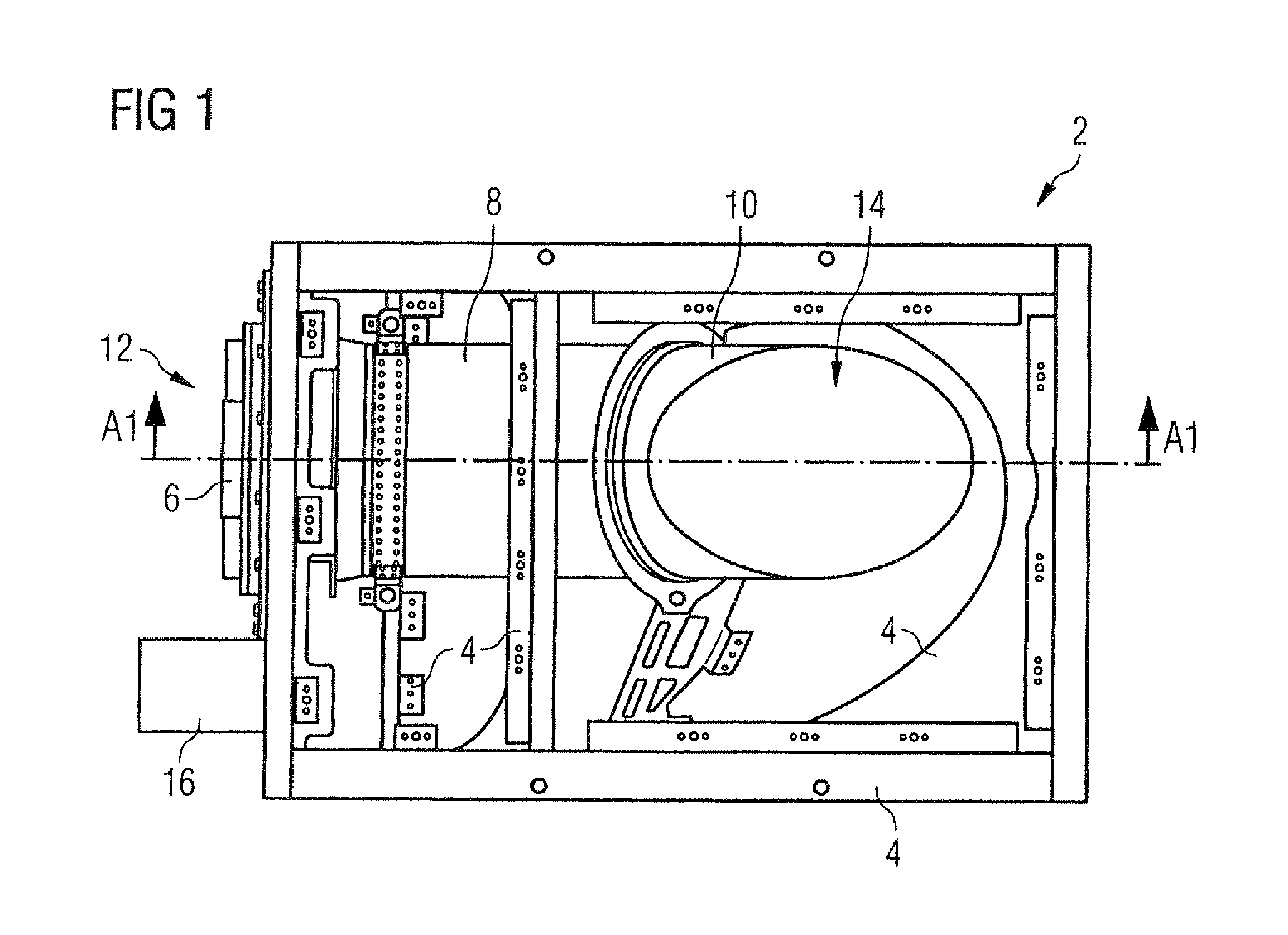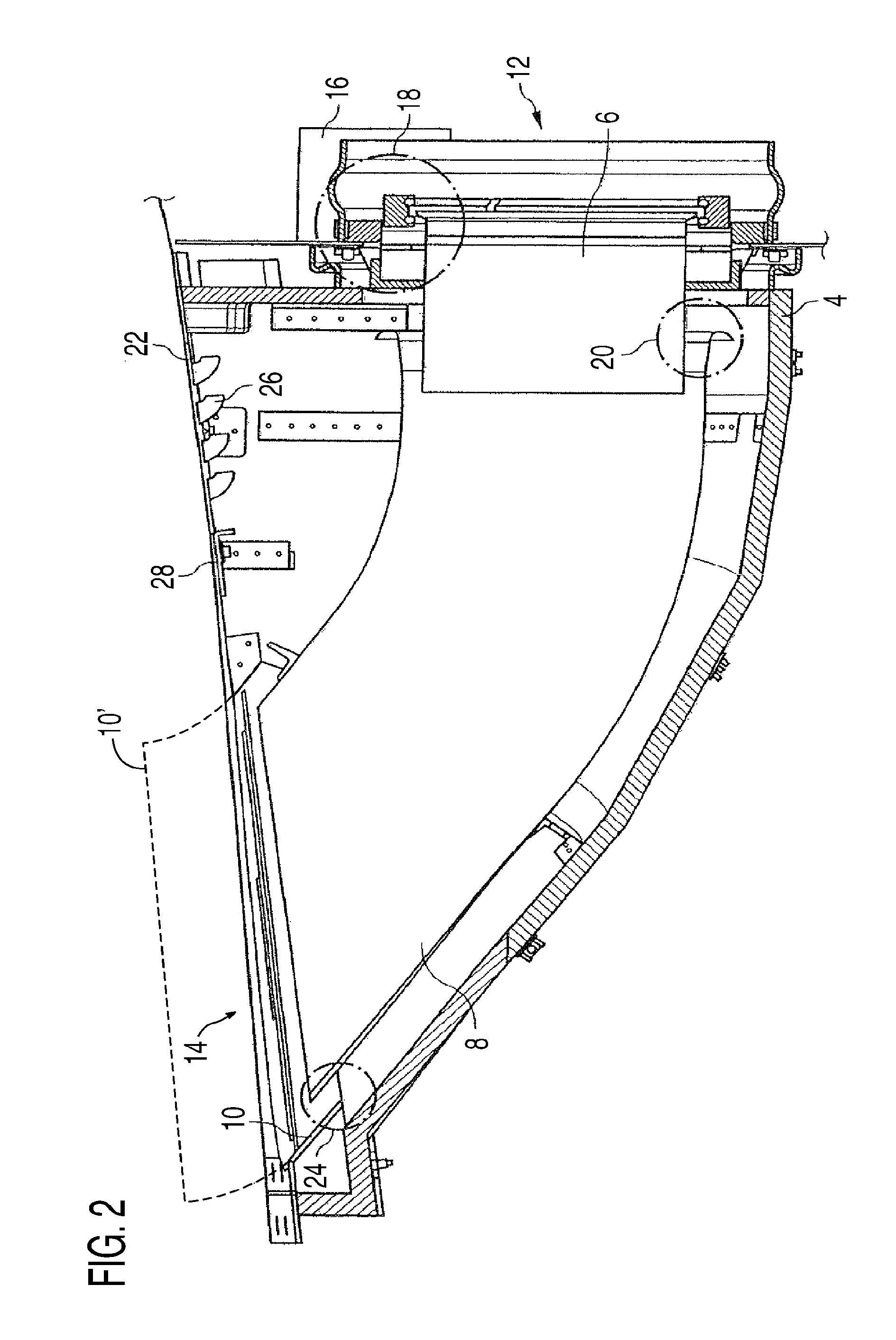Device for cooling hot gas to be discharged from an aircraft
a technology for hot gas discharge and aircraft, which is applied in the direction of rocket engine plants, machines/engines, light and heating apparatus, etc. it can solve the problems of air being sucked in from the external environment, not achieving effective thermal structure protection, and the aircraft cannot be located or identified by means of thermal signature, so as to reduce the flow noise and thus the noise, the effect of reducing the flow nois
- Summary
- Abstract
- Description
- Claims
- Application Information
AI Technical Summary
Benefits of technology
Problems solved by technology
Method used
Image
Examples
Embodiment Construction
[0022]For a better understanding, various embodiments of the device according to the invention, which are integrated by way of example into a military transport aircraft of the type AIRBUS A400M, are described below. The device according to the invention is not limited to the cooling of APU exhaust gases, but can also cool other hot gases from other systems, such as, for example, from a fuel cell. The general term “hot gas” is therefore used below in some cases. The turbine exhaust gas of the APU is to be regarded as a special form of a hot gas.
[0023]FIG. 1 shows an exhaust gas system 2, in which a housing covering fitted during operation has been removed for better illustration. The exhaust gas system 2 comprises a housing 4 formed from a sheet-metal trough, reinforcing components, holders and fittings, and an exhaust gas duct consisting of three successive exhaust gas pipes 6, 8 and 10 and extending from an exhaust gas inlet point 12 into the housing 4. The exhaust gas pipe 6 lead...
PUM
 Login to View More
Login to View More Abstract
Description
Claims
Application Information
 Login to View More
Login to View More - R&D
- Intellectual Property
- Life Sciences
- Materials
- Tech Scout
- Unparalleled Data Quality
- Higher Quality Content
- 60% Fewer Hallucinations
Browse by: Latest US Patents, China's latest patents, Technical Efficacy Thesaurus, Application Domain, Technology Topic, Popular Technical Reports.
© 2025 PatSnap. All rights reserved.Legal|Privacy policy|Modern Slavery Act Transparency Statement|Sitemap|About US| Contact US: help@patsnap.com



